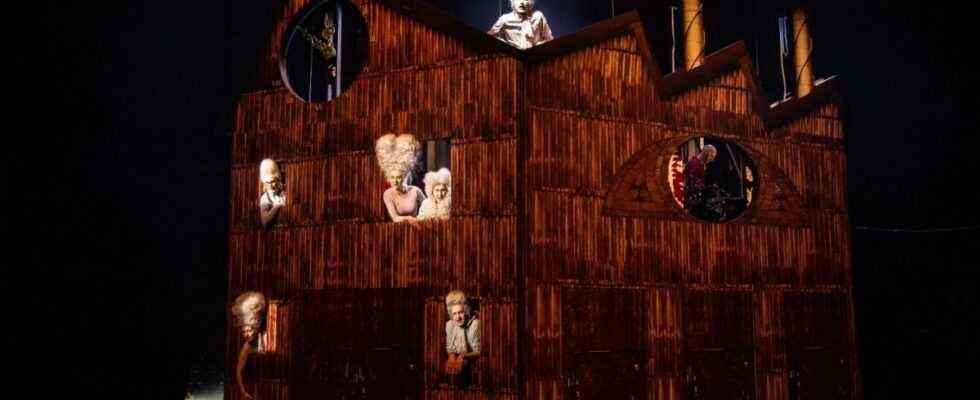It is quite likely that Mühlhiasl really existed. If so, then he lived in the Bavarian Forest in the second half of the 18th century and was a fortune teller. He predicted the two world wars and even the enormity that women will one day wear trousers and short haircuts. Many years later came across Herbert Achternbusch, a great friend of convoluted prophecy, on the Hias and wrote it into a script in which he lustily spread apocalyptic visions of all kinds and crackedly exhibited the stupidity of the people. Werner Herzog then took this script to hand and shot the film “Herz aus Glas” with it in 1976, which has nothing to do with Blondie’s song, but is pure madness. Herzog hypnotized his actors in order to achieve an idiosyncratic stylization. That worked. In the film, somnambulistic characters roll around with rolled eyes and talk very slowly, very little. Only Hias talks more, but he also has his visions and is played by Josef Bierbichler, who is hard to believe was ever so young.
Now a young director comes along, Elsa-Sophie Jach, born in 1991, and brings this script to the stage for the first time, in the stables of the Munich Residenztheater. And the key question is: why?
When the world is upside down, you have to go backwards to move forward
The story takes place under glassblowers in the Bavarian Forest and goes like this: The inventor of the valuable, bright red ruby glass went to the grave with the secret of its manufacture. The feudal master of the hut looks for and finds nothing, the glassblowers fear for their livelihood, the Hias should see the secret. But I don’t want to. The owner of the hut carries out vampiric experiments, the men sit gloomily in the tavern, a few female figures appear who would benefit from an exorcist or something similar. After all, everything perishes. In the film, four men row out to sea in search of the end of the world. On stage it ends with the downfall of Straubing.
Elsa-Sophie Jach had Marlene Lockemann build a witch’s house that you can open and close, puts in the nerdy drumming musician Samuel Wootton and lets a six-member choir, outfitted with worn jogging suits and moth-eaten rococo wigs, tell the story. Above all, however, the six tell the scenes of the film, which you can hardly imagine if you don’t know it. In the end it lurches from scene to scene, some are re-enacted, scurry past, but the core of the evening is somewhere else anyway. At Pia dealer who plays the hias. Glowing in the dark, she stands opposite the choir, a cassandra against stupidity, observes the bizarre people, lined up wallet to wallet. And so this evening becomes a quirky commentary on misbelief and seduction, garnished with sentences of wonderful clairvoyance. When the world is upside down, you have to go backwards to move forward. That’s all back to Achternbusch.

